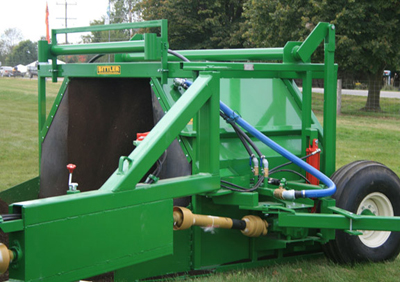
IN TODAY'S modern composting world, there is "windrow composting," a composting methodology, and then there is "composting in windrows," typically as the second phase of a different composting methodology, such as in-vessel, or enclosed aerated static piles. In the former, all composting from start to finish is done in windrows, and is typically conducted outdoors. In the latter, windrow composting may also include forced aeration, and is frequently conducted indoors (in an aeration building). In either case, windrow turning equipment is typically employed to optimize the composting process. In a windrow, temperature control and oxygen levels are managed via mechanical agitation. Pile temperature and oxygen level need to be taken by a site operator with hand-held monitoring tools. Pile turning introduces oxygen, accelerates physical degradation of feedstocks and provides an opportunity to adjust the moisture content to the optimum level. Many windrow turners have a watering attachment, which enables moisture to be added to the pile while turning. Generally speaking, the total composting time can be managed by the aggressiveness of the turning regime. More frequent turning breaks particles down more quickly, and provides an opportunity to optimize composting conditions, thus accelerating the process. This enables a windrow composting facility to increase its annual throughput capacity.
In an effort to increase efficiency, many facility operators continually are trying to process more compost on a site of a given size. Turner manufacturers have moved in the same direction, developing equipment for larger windrows and also equipment that reduces aisle space. To manage on difficult sites, more manufacturers offer four-wheel drive and the option of wheels or crawler tracks (or a combination). In keeping with the trend towards space (and labor) efficiency, self-driven turners have been designed to have a short turning radius. Some models essentially pivot rather than turn.